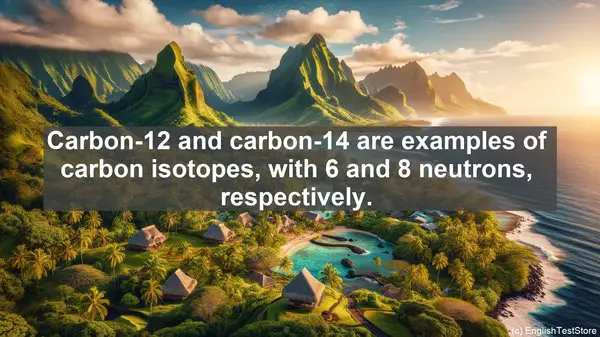Introduction
Welcome to today’s lesson on nuclear astrophysics. As you delve deeper into this fascinating field, you’ll encounter various terms that might seem similar but have distinct meanings. In this lesson, we’ll unravel the top 10 commonly confused words in nuclear astrophysics. So let’s get started!
1. Fusion vs. Fission
Fusion and fission are two fundamental processes in nuclear astrophysics. Fusion refers to the merging of two atomic nuclei to form a heavier nucleus, releasing a tremendous amount of energy. On the other hand, fission involves the splitting of a heavy nucleus into two or more lighter nuclei, accompanied by the release of energy. While both processes release energy, they differ in the reactions they entail. Fusion powers the stars, including our Sun, while fission is harnessed in nuclear power plants.
2. Isotope vs. Element
Isotope and element are often used interchangeably, but they have distinct meanings. An element refers to a substance composed of atoms with the same number of protons. For example, all carbon atoms have six protons, making carbon the element. On the other hand, isotopes are variants of an element with the same number of protons but different numbers of neutrons. Carbon-12 and carbon-14 are examples of carbon isotopes, with 6 and 8 neutrons, respectively.
3. Neutron Star vs. Black Hole
Neutron stars and black holes are both remnants of massive stars, but they differ in their properties. A neutron star is incredibly dense, with a mass comparable to that of the Sun but squeezed into a sphere of only a few kilometers. It is composed mainly of neutrons. In contrast, a black hole is a region in space where gravity is so intense that nothing, not even light, can escape its pull. It is formed when a massive star collapses under its own gravity.
4. Supernova vs. Nova
Supernovae and novae are both astronomical events involving stars, but they differ in scale and intensity. A nova occurs in a binary star system, where a white dwarf, a dense stellar remnant, accretes matter from its companion star. This matter triggers a thermonuclear explosion on the white dwarf’s surface, resulting in a temporary increase in brightness. In contrast, a supernova is a much more powerful explosion that occurs when a massive star reaches the end of its life, leading to its complete destruction.
5. Redshift vs. Blueshift
Redshift and blueshift are terms used to describe the shift in the wavelength of light from astronomical objects. Redshift occurs when an object is moving away from us, causing the light it emits to stretch, resulting in a shift towards the red end of the spectrum. This phenomenon is a key piece of evidence for the expansion of the universe. Conversely, blueshift occurs when an object is moving towards us, causing the light to compress, resulting in a shift towards the blue end of the spectrum.

6. Nucleosynthesis vs. Nuclear Fusion
Nucleosynthesis and nuclear fusion are related but distinct processes. Nuclear fusion, as we discussed earlier, is the process of combining atomic nuclei to form a heavier nucleus. Nucleosynthesis, on the other hand, refers to the formation of new atomic nuclei, often through fusion, in various astrophysical environments. It is responsible for the creation of elements in the universe, from hydrogen and helium in the early stages to heavier elements like carbon, oxygen, and beyond.
7. Cosmic Rays vs. Solar Wind
Cosmic rays and solar wind are both streams of particles originating from space, but they have different sources and compositions. Cosmic rays are high-energy particles, primarily protons, that come from outside our solar system, often from distant galaxies. They can have immense energies, some even higher than those produced in particle accelerators on Earth. Solar wind, on the other hand, is a stream of charged particles, mainly electrons and protons, emitted by the Sun. It is a constant outflow from the Sun’s outer atmosphere.
8. Pulsar vs. Quasar
Pulsars and quasars are both astronomical objects, but they are vastly different. A pulsar is a highly magnetized, rotating neutron star that emits beams of electromagnetic radiation. These beams are only visible when they point towards Earth, resulting in a periodic ‘pulsing’ effect, hence the name. Quasars, on the other hand, are extremely luminous, distant objects powered by supermassive black holes at their centers. They emit vast amounts of energy, including visible light, and are among the brightest objects in the universe.
9. Dark Matter vs. Dark Energy
Dark matter and dark energy are two mysterious components that make up a significant portion of the universe, but their natures are still largely unknown. Dark matter is a form of matter that does not interact with light or other forms of electromagnetic radiation. Its presence is inferred through its gravitational effects on visible matter. Dark energy, on the other hand, is a hypothetical form of energy that is believed to be responsible for the accelerating expansion of the universe. Its nature and origin remain major areas of research.
10. Singularity vs. Event Horizon
In the realm of black holes, singularity and event horizon are crucial concepts. A singularity refers to the center of a black hole, where matter is infinitely dense and the laws of physics, as we currently understand them, break down. It is a point of infinite gravity. The event horizon, on the other hand, is the boundary of a black hole beyond which nothing can escape. Once an object crosses the event horizon, it is inevitably pulled towards the singularity, with no possibility of escape.

